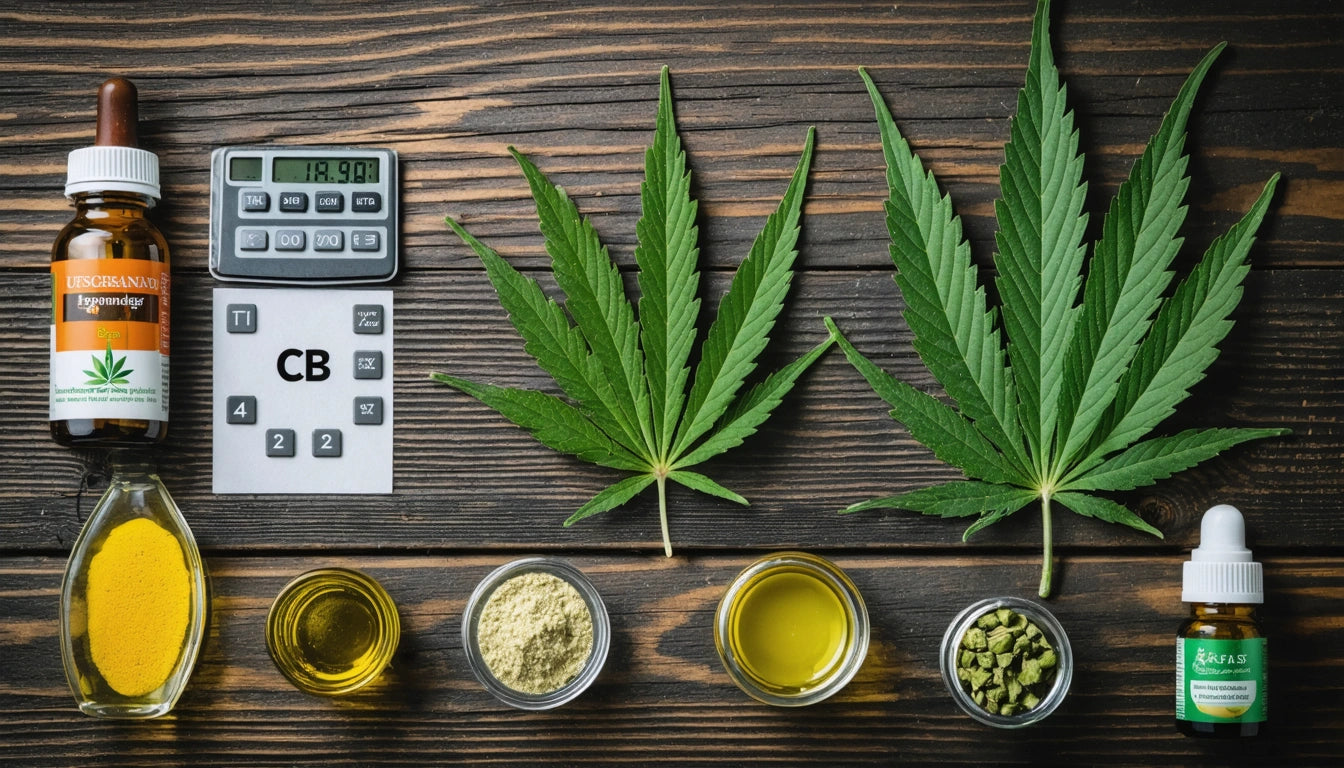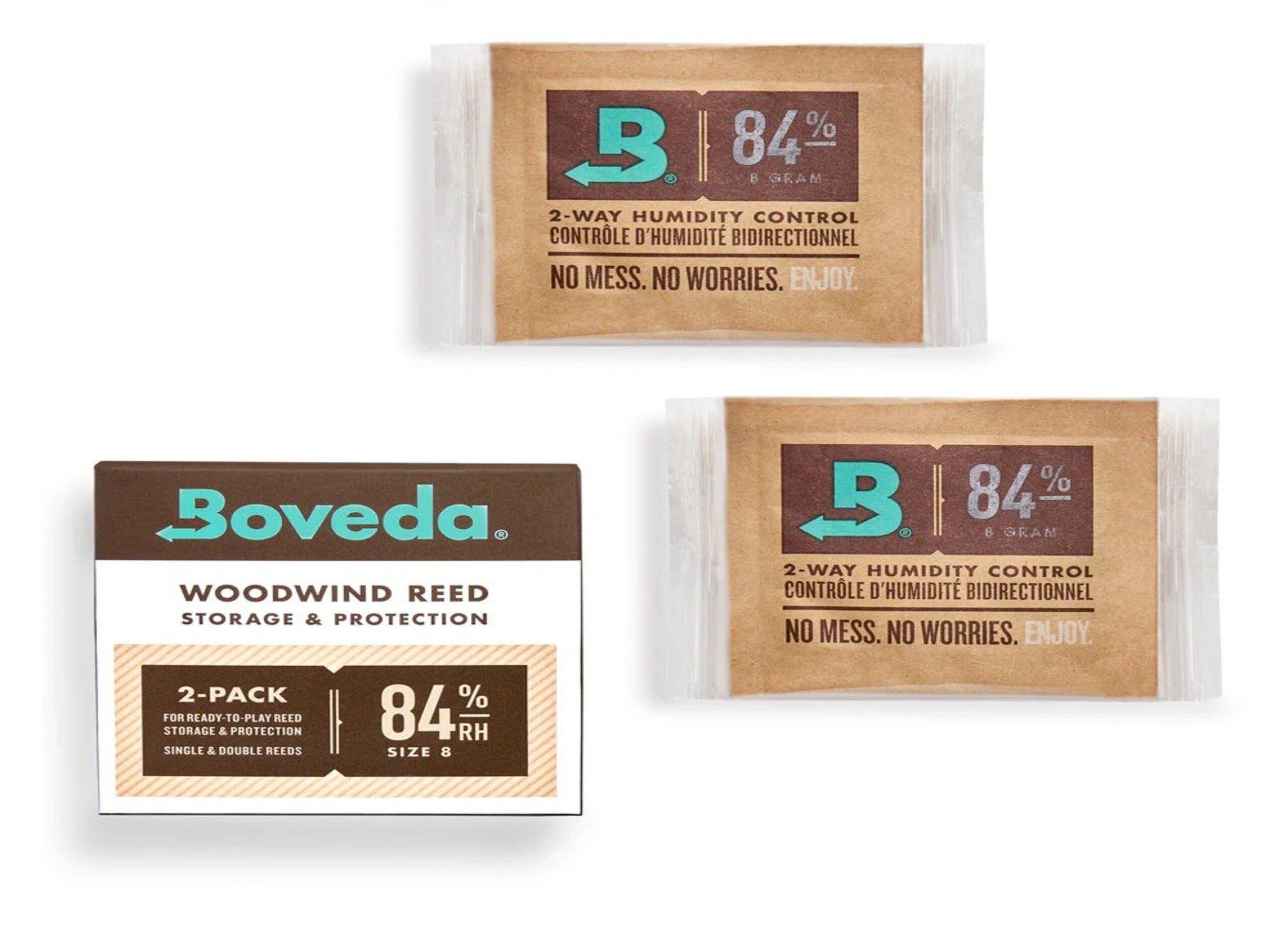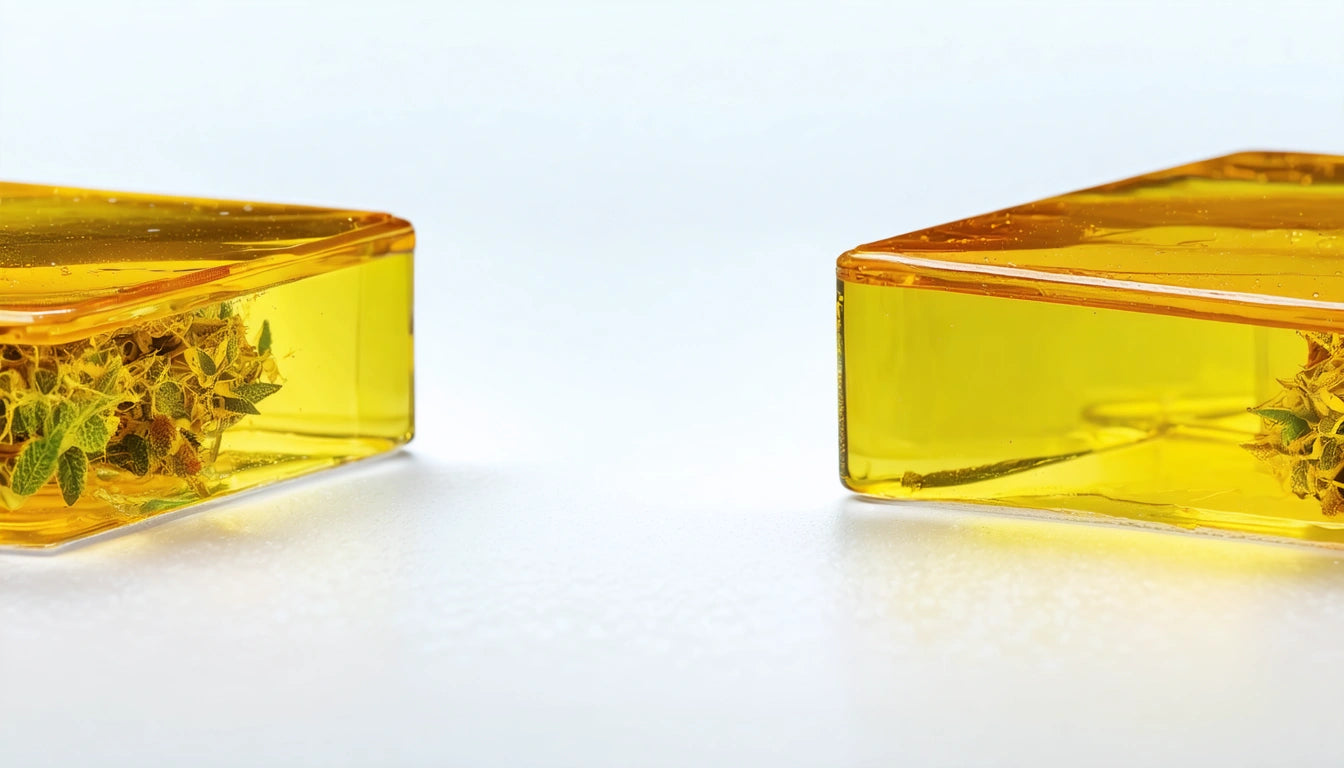Table of Contents
Cannabis contains over 100 cannabinoids, but two stand out as the most studied and utilized: THC (tetrahydrocannabinol) and CBD (cannabidiol). These compounds interact with our bodies in distinctly different ways, creating varied effects that serve different purposes. Understanding these differences helps consumers make informed choices about cannabis products.
Chemical Structure and Interactions with the Body
THC and CBD share the same molecular formula (C21H30O2) but differ in their atomic arrangement. This subtle structural variation creates profound differences in how they affect the human body. Both compounds interact with the endocannabinoid system (ECS), a complex cell-signaling network that helps regulate various functions including mood, memory, sleep, and appetite.
The key difference lies in how they bind to cannabinoid receptors:
- THC binds directly with CB1 receptors (primarily found in the brain and central nervous system), creating psychoactive effects.
- CBD has low affinity for CB1 and CB2 receptors, instead working indirectly by inhibiting the breakdown of endocannabinoids and influencing non-cannabinoid receptors.
Effects on Mind and Body: THC vs CBD
THC Effects
THC produces the characteristic "high" associated with cannabis use. Common effects include:
- Euphoria and altered sensory perception
- Relaxation and pain relief
- Increased appetite ("munchies")
- Potential anxiety or paranoia (especially at higher doses)
- Impaired motor skills and coordination
The duration of these effects varies based on consumption method, dosage, and individual factors. For more information on duration, see how long a cannabis high lasts.
CBD Effects
CBD is non-intoxicating and produces more subtle effects:
- Potential reduction in anxiety and stress
- Anti-inflammatory properties
- Possible pain relief without cognitive impairment
- May counteract some THC effects
- Generally well-tolerated with minimal side effects
Many users report that CBD provides therapeutic benefits without affecting their ability to function normally. For those wondering, CBD will not get you high like THC products.
Medical Applications and Therapeutic Benefits
Both cannabinoids show promise for various medical applications, though research is still evolving.
THC Medical Uses
- Pain management, particularly neuropathic pain
- Nausea and vomiting (especially for chemotherapy patients)
- Appetite stimulation for conditions like HIV/AIDS
- Muscle spasticity in multiple sclerosis
- Glaucoma (reducing intraocular pressure)
CBD Medical Uses
- Epilepsy and seizure disorders (FDA-approved for certain forms)
- Anxiety and stress-related disorders
- Inflammatory conditions
- Sleep disorders
- Potential neuroprotective properties
The distinction between medical and recreational cannabis often blurs, as explained in this article on medical versus recreational cannabis.
Legal Status and Regulations
The legal landscape for THC and CBD differs significantly:
THC remains federally illegal in the United States as a Schedule I controlled substance, though many states have legalized it for medical and/or recreational use. Products containing more than 0.3% THC are subject to state-specific regulations.
CBD derived from hemp (cannabis with less than 0.3% THC) was federally legalized under the 2018 Farm Bill. However, regulations vary by state, and the FDA has only approved one CBD-based medication (Epidiolex).
These distinctions affect everything from traveling with cannabis products to employment drug testing. THC can remain detectable in your system for days or weeks, as detailed in this guide on detection times.
Consumption Methods and Product Types
Both THC and CBD can be consumed in various forms, each offering different onset times, duration, and intensity of effects:
- Inhalation (smoking or vaporizing flower or concentrates)
- Edibles and beverages
- Tinctures and oils
- Topicals and transdermal products
- Capsules and tablets
For optimal grinding of flower for smoking or vaporization, many consumers use specialized grinding equipment that ensures consistent particle size for even burning and vapor production.
Product formulations also vary widely, from pure isolates to full-spectrum products containing multiple cannabinoids and terpenes. Understanding the difference between full-spectrum, broad-spectrum, and isolate products helps consumers select options aligned with their needs.
Choosing the Right Cannabinoid for Your Needs
When deciding between THC and CBD products, consider:
- Desired effects: psychoactive vs non-psychoactive
- Therapeutic goals
- Tolerance and sensitivity
- Drug testing concerns
- Legal considerations in your location
Many users find benefits in products containing both cannabinoids, as they may work synergistically in what's called the "entourage effect." For beginners, starting with low doses is advisable, as outlined in this dosage guide for beginners.
Understanding the fundamental differences between THC and CBD empowers consumers to make informed choices about cannabis products. While THC offers recreational and therapeutic benefits with psychoactive effects, CBD provides potential health advantages without intoxication. As research continues and regulations evolve, both cannabinoids will likely play increasingly important roles in wellness and medicine.











Leave a comment
All comments are moderated before being published.
This site is protected by hCaptcha and the hCaptcha Privacy Policy and Terms of Service apply.